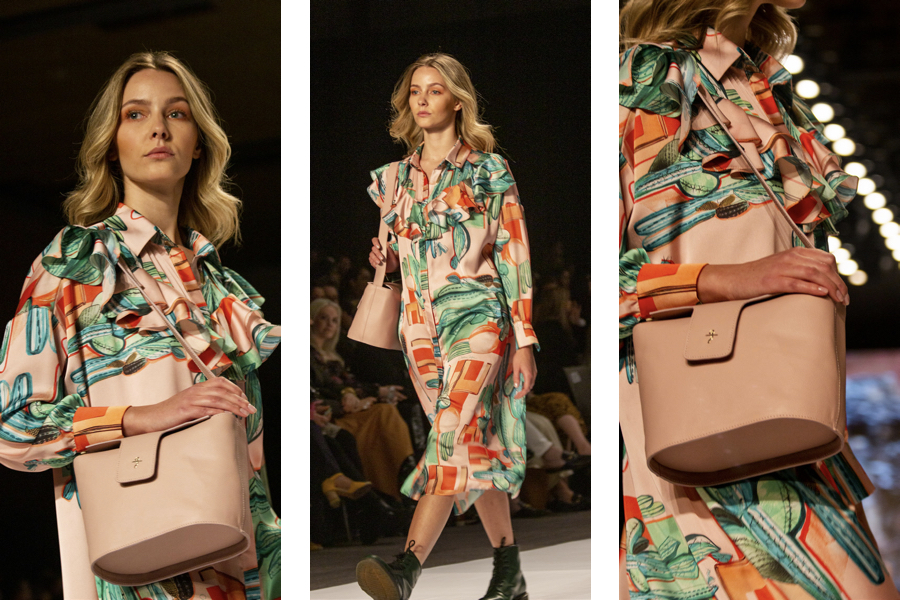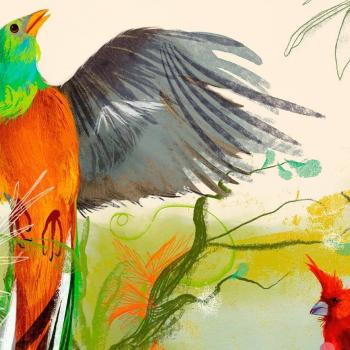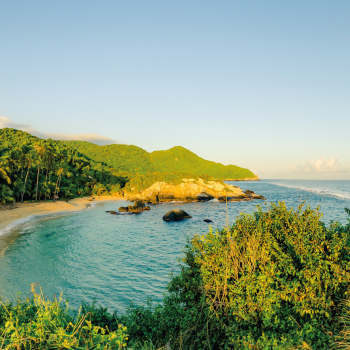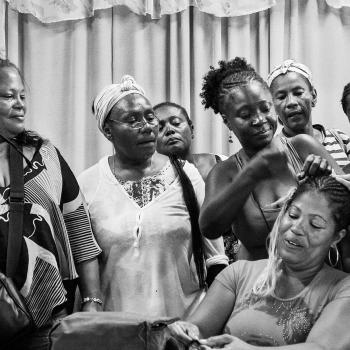Art and Fashion Capital
Bogota has become a cosmopolitan city in which art, culture and gastronomy coexist in every corner and neighborhood. Discover why Bogota is also known as “the Athens of South America”.
Bogota exists many times over. In the narrow streets of the La Candelaria neighborhood, on the wooden balconies and on the roofs of carmine mud tiles that saw the birth of the capital of the country’s capital on August 6, 1538. It exists in its colonial architecture, in its churches, in the vision of Germán Samper Gnecco when designing the Luis Ángel Arango Library, in its museums and cobbled passages that connect visitors with the dawn of history.
But there is another city that stands just a few blocks away from classical Bogota. A metropolis that reinvents its spaces from time to time and where art, culture, fashion and gastronomy are experienced in all-existing ways. Ortega y Gasset argued that the city is first and foremost a place, an agora, discussion, eloquence. He said that people build houses to live in them and created the city to leave home and meet others who have also left theirs; thus, Bogota lives in its streets and communal spaces more than in what is understood as the house proper, itself a private space.

The Bogota that moves away from the pilasters and gargoyles of the National Capitol building, the same that at the end of the 19th century was nicknamed “the South American Athens”, exists in traditional neighborhoods that have reinvented their way of life. San Felipe, for example, located between 72nd and 80th Street and 20th and 24th Avenue, is a neighborhood that ten years ago was like any other in Bogota: narrow streets, bakeries, workshops, a central park, some places for lunch and a church that opened its doors when everything else was closed.
But today, in the best style of SoHo or Wynwood, in San Felipe more than forty places converge, including galleries, cafes, breweries, bars and locations where you can enjoy culture, art and gastronomy. Since the Bogota International Art Fair began in 2004, the accelerated growth of these places has redefined the city. The emergence of new art collection activities, installations, performances and contemporary art has transformed the capital of the country into a cosmopolitan city that experiences culture as an encounter rather than as a mere act of observation.
That is why San Felipe Night, an event that is repeated twice a month and where the galleries, studios, cafes and restaurants open their doors at six in the evening for the curious eyes, for occasional art collectors and pedestrians who are around, has become a success. In the words of gallery owners of the neighborhood, the creation of a circuit strengthens the market and the guild, since on nights like this, hundreds of people wander the streets and dozens of galleries to appreciate the work of the artists exhibited. Pedestrians take over the neighborhood and art becomes a conversation that transcends the very exhibitions on display.
The last San Felipe Night of 2019 took place on December 12; from six in the afternoon onwards, the neighborhood welcomed attendees, closing a decade of cultural growth. Conversations, laughter, a shy exploration of the unknown, concerts, and an audience that is seldom recurrent, are several of the elements that are repeated intermittently along the city blocks. Gallery owners and various artists attend and mingle with people who appreciate their works or take advantage of the night, away from the critical observation of a collector. The idea is to enjoy, to open the circuit, to experience the neighborhood.
Did you know that, although the great artistic events of Bogota take place in just a few months, the circuit remains active throughout the entire year thanks to the multiple activities and exhibitions of groups and galleries?
In Bogota the night is always young. The city, where it gets dark at 6 PM, turns on its lights before the last ray of light dims, and opens its doors for visitors to enjoy its best kept secrets. Its flavors, driven by new proposals and always at the forefront of the world agenda, vary almost as much as the public that walks streets.

In Bogota you can find dishes ranging from traditional delicacies to molecular and experimental cuisine on the same block.
The city has become an epicenter of restaurants of international standing. Every year new proposals appear and it is nearly impossible to exhaust options when you want to try something new. Restaurants that take special care of every aspect, from their menu, their interior design, quality staff, to the music and artistic proposals that complement the experience of their guests, have taken over several neighborhoods and locations thanks to the wide range of gastronomic possibilities they offer.
In La Macarena, a neighborhood established in 1950 near the center of the city bordering the eastern hills and characterized by colorful houses, restaurants with traditional suggestions coexist with others closer to the Mediterranean and European food options. Similarly, more than a hundred blocks to the north, Usaquen, a neighborhood whose colonial zone was built in 1665 and where one of the most recognized gastronomic areas of the city is located, is distinguished by its architectural significance and its restaurants with large patios, its flea market and for being a meeting place to enjoy food from every corner of the country and the world.
Between these two neighborhoods there are other options just as diverse and internationally recognized for their quality. The Chapinero district where two of the three restaurants that were listed in 2019 in Latin America’s Best are located, includes neighborhoods such as Quinta Camacho, Zona G, Zona T and Parque de la 93, all of them places recognized for their exceptional preparations, Greek Italian, Spanish, Japanese, Peruvian, Argentine restaurants, fast food, molecular food, preparations with one hundred percent local ingredients, vegan restaurants, others with secret locations, passages that connect taste with experience; Bogota has endless options when it’s time to eat...
Did you know that Bogota is 2,625 meters above sea level, which makes it the third highest capital city in South America?
In the best style of any Latin American capital, it is not surprising to find designer shops, bars, and meeting points where sidewalks become catwalks between one restaurant and another. In Bogota, gastronomy, culture and fashion usually go hand in hand.
The Fashion Art Circuit was born in the United States in New York, Los Angeles and southern Florida twelve years ago with the intention of disseminating the work of artists from all existing disciplines. In 2015, with the aid of a Colombian entrepreneur, the official headquarters for all Latin America were inaugurated in Bogota. Thus, the reinvention of the public space of the capital of the country has become a circuit where fashion, fine arts, music and outdoor gastronomy coexist.
Conquering spaces such as public transport, museums, houses in the center of the city and commercial premises, Bogota has turned its streets into catwalks for all styles. The creative industries, boosted by the digital era, have grown thanks to the proactivity of Colombians who are increasingly wagering on ventures in these areas in order to show the world what they are doing.

Over the last decade, Bogota has become a city where fashion redefines the urban landscape.
Independent design stores, fairs, collection launches, and even music festivals favor the fashionista exploration of a generation that defies standards. In Additionally, Bogota continues to open shopping malls where more and more major brands arrive with their proposals, encouraging competition among giants of the industry and independent bids.
The truth is that Bogota exists in many ways in the same place. Its streets change depending on who dwells in them, and their sidewalks constantly mutate. A TransMilenio station can be just that, or a catwalk where fashion collections with patterns inspired by the Colombian Caribbean are paraded. Its neighborhoods are nocturnal beasts that vary as the night passes and its people have the possibility of being who they want to be in the spaces they enjoy the most.
Bogota is there for all who want to visit it. For those who want to lose themselves among its artists, its flavors and contrasts. The city is reinvented for everyone and among its streets the thousand faces of the same city are hidden to the naked eye, the faces of a city that doesn’t stop growing.
Text by Nicolás Rocha



























